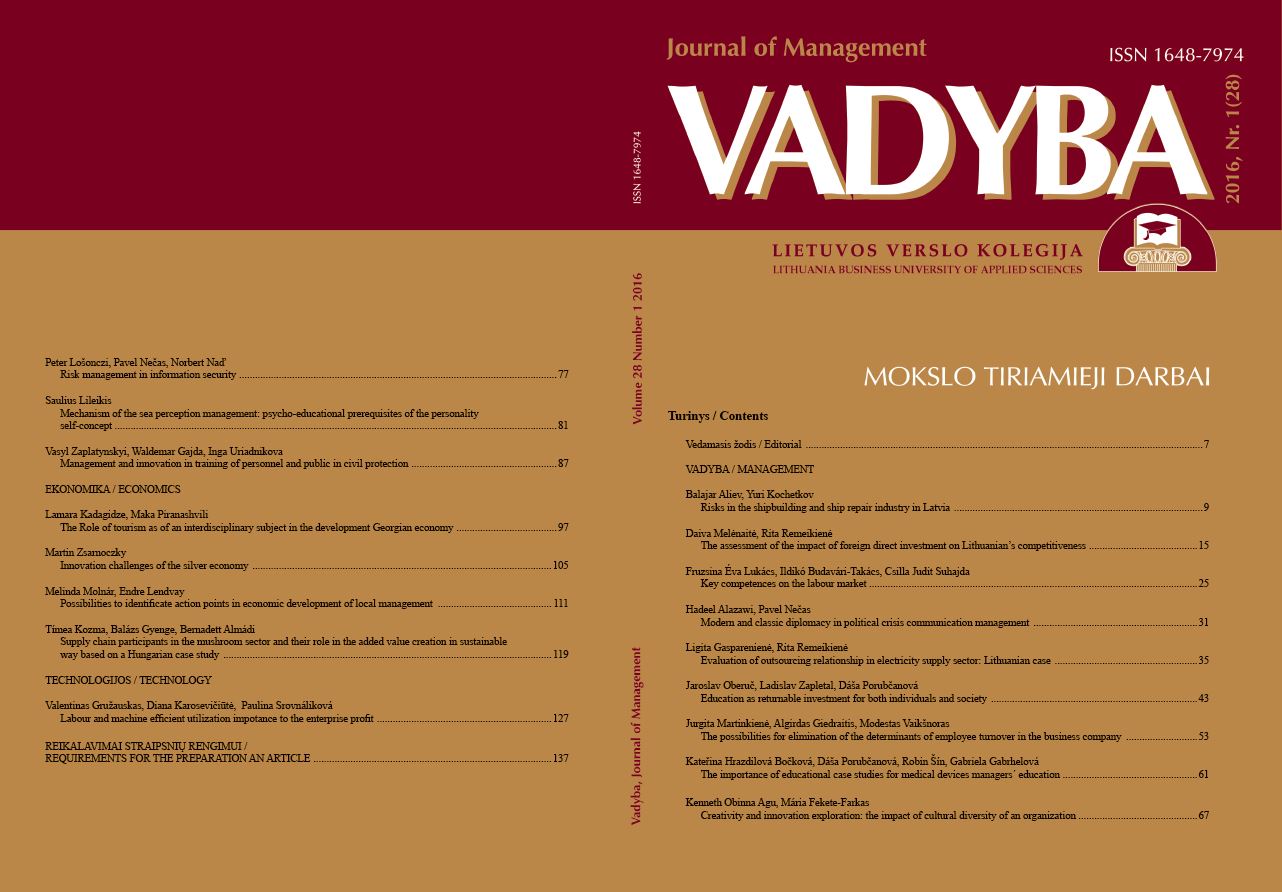THE POSSIBILITIES FOR ELIMINATION OF THE DETERMINANTS
OF EMPLOYEE TURNOVER IN THE BUSINESS COMPANY
THE POSSIBILITIES FOR ELIMINATION OF THE DETERMINANTS
OF EMPLOYEE TURNOVER IN THE BUSINESS COMPANY
Author(s): Jurgita Martinkienė, Algirdas Giedraitis, Modestas VaikšnorasSubject(s): Social Sciences, Economy, Business Economy / Management, Human Resources in Economy
Published by: Lietuvos verslo kolegija
Keywords: Employee turnover; adaptability; regions
Summary/Abstract: Employee turnover takes place in any organization. The article formulates the problem that the reasons of employee turnover and its effect on the company have not been appropriately assessed or even have not been analysed at all. Therefore, analysis of current situation in the company is made in terms of human resources turnover as well as its determinants. Having systemised the results of the theoretical analysis, a model was formed of three groups of factors: the company’s external and internal factors and personal factors. They are supplemented by the determinants of employee turnover, such as the economic situation of the country; motivation system, interpersonal relationships, workload, moral values; job satisfaction, self-fulfilment opportunities, etc. It can be maintained that the model for reduction of employee turnover was created that includes the following tools: adaptation programme, closer communication between managers and subordinates, teamwork, management style of managers, adequate work tasks, workload, career, development-improvement system, organizational culture, labour agreements, business development, programme for increase of employee loyalty, pre-employment and exit interviews; this model would become a possibility for elimination of the determinants of employee turnover in a business company. Various combinations of the above tools would help a manager of the company to manage the internal and external turnover of employees. The results of the analysis give rise to new ideas, decisions for initiated changes that become a guideline for further implementation of the company’s objectives.
Journal: VADYBA
- Issue Year: 28/2016
- Issue No: 1
- Page Range: 53-60
- Page Count: 8
- Language: English

